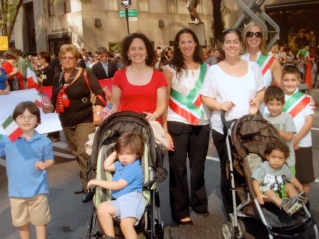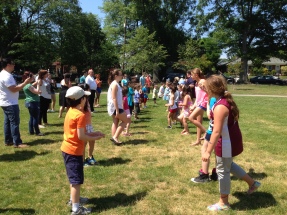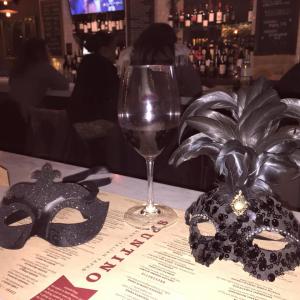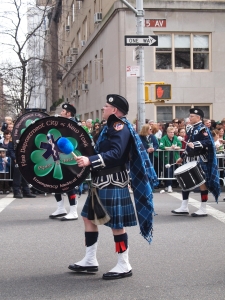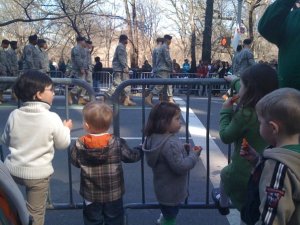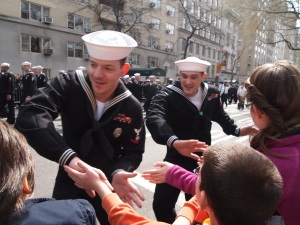You may have noticed from reading my posts, that although I have spent time researching and procuring books and innovative materials to help support my children’s interest in languages, I am also a firm believer in regularly immersing them in cultural activities. I strongly believe that language learning should be relevant for children. You can make their language acquisition relevant by engaging them in fun, interactive activities and giving them the opportunity to practice their “new” words and expressions during different times of the year and in varied environments. You should also provide them with historical background and a framework to help them remember their “new” words more easily.
One way to go about this undertaking is to keep your finger on the pulse of annual cultural events that take place around certain holidays or during certain seasons. Although my children do not speak Italian, continuous exposure to one of their heritage countries’ customs is high on our list of priorities. Accordingly, whenever we have an opportunity to attend an Italian cultural event, we do. We have marched in the NYC Columbus Day Parade on 5th Avenue, attended language lessons at our public library co-hosted by CampItlalia and New York Italians (See Fun Events that Complement Language Learning) and participated in UNICO’s Italian Heritage Summer Picnic. These types of events are great venues for children to learn about history and geography; language and customs; and foods and desserts.
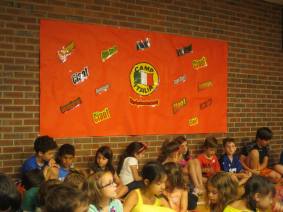
Kids learning Italian in a fun CampItalia lesson at the public library! Photo courtesy of CampItalia
Carnevale in Italy
This year, I also attended a “Carnevale” event hosted by Long Island Italians, a chapter of New York Italians. This non-profit organization kicked off the Easter season with a social and informative event. Although the event was too late in the evening for my children to attend, I shared with them what I observed and learned that night and spoke to them about the history of Carnevale. They were intrigued, more so, because of the timeliness of the “lesson”. Some of the tidbits they enjoyed hearing about:
- Origin of the Word – Carnevale comes from the Italian “carne’ (meat) + ‘levare’ (to remove or take away).
- Carnevale was first celebrated in the 12th century in the northern city of Italy called Venezia.
- The entire city becomes a stage and residents, visitors, actors, acrobats, and musicians wear elaborate masks and elegant costumes.
- Carnevale was especially fun because the masks allowed all people to be equal: a poor peasant could be mistaken for royalty when faces are covered by masks.
Easter in Italy
In Italy, on Palm Sunday, one week before Easter Sunday, many children create gifts for family and friends made from the palms brought home from Palm Sunday services. Italian children, like children in America, also dye Easter eggs. They make their own natural dye from red onion skins. Rather than placing the eggs in baskets, they are placed in or on bread braids to add color to the Easter desserts. Some of the dyed eggs come out after the Easter meal for children to play games with.
Children in Italy are not familiar with the Easter bunny, as the concept of the Easter Bunny that American children know was actually brought to the United States by the Germans in the 1700’s. Italian children, like their American counterparts, also receive elaborate chocolate Easter eggs with treats inside as gifts from their parents and family members.
If your children are studying Italian, are of Italian heritage, or just want to learn more about Italy and its culture, seek out these types of free and fun events in or near your community. Below are some places you could begin:
- CampItlalia continues to host additional free library events in neighboring communities in Long Island, NY and is partnering with other Italian organizations in the Northeast Region to promote the Italian language and culture. CampItalia also offers an enriching, lively, well-rounded Italian summer camp program. Children practice speaking Italian and learn about aspects of Italian life, traditions, music, and history. This program is structured according to age groups and is ideal for children between the ages of 4 and 12. Click here for program details.
- UNICO has 20 active chapters across the United States, and
- New York Italians is branching out and developing chapters across the United States, too!
Buona Pasqua a tutti!!

